Cape to Cairo Journey:
Pages to Explore:
Blog Catagories:
Photo of the day








Home | About Us | Safaris & Photographic Trips | Blog | Contact Us | Sitemap | Disclaimer
The Essence of the Journey!
We would like to do this trip to experience new cultures.
We would like to understand what makes African people pure.
What are their spiritual beliefs, understandings?
How does the spiritual world we know exist to them?
What can we learn from them?

Liwonde National Park
The premier wildlife park in Malawi seldom disappoints.┬Ā With the Shire River running through the park, there seems to be enough for all.┬Ā Poaching appears to be under ŌĆścontrolŌĆÖ and with an absence of large lion populations (only one individual male sighted regularly) violence does not seem to be part of this National Park.
As a result, the ungulates are chilled.┬Ā The waterbuck are large and plentiful. Sable are doing really well too, with a population of 1200 odd.┬Ā There are a lot of Mopanes, however as Celeste commented,ŌĆØ ŌĆ”these are probably the most beautiful Mopanes I have ever seenŌĆØ.┬Ā Being in the park in May was the beginning of the dry season, which made a change, as 12 years ago we visited in the wet season, and could not get 3kms from the entrance gate as the roads were awash with water and run-off.┬Ā These days there is a ferry to Mvuu camp in the north so no worries about timing visits.
An early morning drive yielded Spur-winged Plover.┬Ā This was a pleasant surprise considering they are not meant to occur in Malawi, at all.┬Ā There is a platform on a tributary just off the Shire which is a very peaceful place and worth a few stops.┬Ā We were chuffed to see Grey-headed Parrot, Lizard Buzzard, Osprey and Boehms Bee-eater aplenty.┬Ā There was a small party of 12 elephant enjoying the waters of the Shire too.┬Ā It was a treat to see HildebrandŌĆÖs Francolin on the way back.
Lillians Lovebirds are commonly heard in the park, but can be difficult to see.┬Ā Their small size combined with the fact that they enjoy the tops of trees makes it awkward.┬Ā They also have brilliant camouflage with the bright Mopane leaves.┬Ā There is currently a study to evaluate the effect of various environmental factors on their numbers.
I decided to treat myself the following morning, and go rhino tracking.┬Ā This was offered for 40usd, expected to take about 3 hours and included breakfast.┬Ā I was up at 04h30 and was joined by Christopher the tracker, Maxwell, the gun bearer.┬Ā Julius was the official guide, and Frank was a German guide in training.┬Ā We searched for hours, prints, middens, resting places of black rhino, but no visual sightings.┬Ā We had taken 05h00 hours and no joy.┬Ā We did get some super sightings of LivingstoneŌĆÖs Flycatcher.┬Ā We also saw some fresh, clear prints of lion too.┬Ā
Nothing like the smell of steaming fresh elephant dung (they break in and out of the sanctuary from time to time).
The highlight of the day was meeting Michael Labuschagne.┬Ā Michael is responsible for and has achieved tremendous success with the Liwonde scouts conserving the game. This morning he was running a coxswain course for the scouts, which is critical for patrolling the Shire River.┬Ā We had already seen numerous poachers ŌĆō mainly wood, but Mike had mentioned that they do come over the Shire to poach Waterbuck and other game.
Speaking Rhino Rescue Project (RRP), we shared information regarding rhino conservation and the successes and failures of folk in the neighbouring states.┬Ā Michael mentioned that some of the successes that he had achieved, were through partnerships such as engineering for the roads and an IT specialist to help with computer education.┬Ā We spoke about the RRP partnering Liwonde in their conservation plight as well as possibly training some of their trackers and guides by some FGASA field guides.┬Ā In travelling around the park, we noticed that the villages were increasingly close to Liwonde and this was causing pressure on the local wildlife.┬Ā I felt that the rhino population was a ticking time bomb, with poaching of rhino and demand on horn as it is presently.
Urgent Appeal
Michael made it clear that although he was keen on the benefits of RRP, they were light years away from being able to afford such luxury.┬Ā The only possibility is if we could somehow raise the funds for them.
12 years ago, when I first visited, they had then recently started their rhino breeding program receiving rhino from SA ŌĆō 6 in total. Today in 2012, they have increased that number to 18, essentially tripling what they received.
Malawi today has just had their first lady prime minister in power, Joyce Banda.┬Ā Although the country is filled with optimism, it is reeling from the tyrannical reign of Mutharika (who died suddenly this year of ill health).┬Ā The country was led poorly, and as a result has had huge forex and fuel shortages. ┬ĀWith Joyce Banda, this is starting to right itself.┬Ā However, in scenarios such as these, we have often seen that the wildlife suffers.┬Ā Recently, Liwonde National Park received just 400usd to run operations in the park for a month.┬Ā This is clearly inadequate for a park of 548km2.
There is a sectioned off area of the park where the rhino are kept.┬Ā This controlled area has a few issues:
- It was established with the idea of breeding the rhino to a point where the rhino population had been stabilized, and then to drop the fences and release the rhino. ┬Ā
- The area has become too small.┬Ā Having lost one male bull to fighting, two other younger bulls were released outside the enclosure.
- The fence is in a state of disrepair and can no longer be electrified.
- Breeding is being hampered in the cordoned off area, as the area is too small.┬Ā The dominant male is consistently attacking other males.
- The time to expand and release the rhino into the rest of the park is now.
As well as Liwonde, Malawi also has Majete Wildlife Reserve.┬Ā This is 700km2, and although it is not as well established as Liwonde, has a population of 6 black rhino (2 from the breeding program at Liwonde).
Mike Labuschagne is responsible for writing and revising the ŌĆśRhino PolicyŌĆÖ document for Malawi.┬ĀAs mentioned in the blog above, he is currently stationed at Liwonde and in charge of the rhino conservation efforts as well as anti-poaching.┬Ā It is also great that he is seriously opposed to de-horning.┬Ā We discussed in length the benefits of the Rhino Rescue Project and the efficacy of using the ectoparasiticide treatment at Liwonde.┬Ā He is extremely keen, and is prepared to have the RRP integrated into the national Rhino Policy manual such that statement such as ŌĆ£all rhino occurring in Malawi will be treated with prescribed ectoparasiticideŌĆØ. ┬ĀAs a country they could boast that ALL their horns are treated – therefore poachers stay away!
The problem is that they have no funding.
Treatment costs 2000 usd per animal and we urgently need to raise funds for this cause.┬Ā Should you be willing to make a contribution to this cause, please access the bank account through the ŌĆśDonationsŌĆÖ section of this web page.
Zomba Plateau
Fuel shortages in Malawi had vastly reduced our travel plans in Malawi.┬Ā We focused instead on the south of the country as we were to pass into northern Mocambique.┬Ā We had hoped to take in Vwaza marsh and Nyika, however with the revised plans, we went in search of some specials and altitude around Zomba Plateau.┬Ā It was the weekend and found that the campsite at Chitinji had closed down.┬Ā There are numerous locals around that are desperately looking to provide a service in return for a fee of sorts.┬Ā We met Michael who suggested that we consider a cottage.┬Ā As it was getting late and we knew the plateau could get cold at 2087 metres, we decided this could be a wise option.┬Ā We found Guinea Fowl Cottage, which at a price of 40 usd per night, came with Edward the cook and two other assistants, on a lavish Houghton style garden.┬Ā It was a treat to have a fireplace lit at night, all meals prepared and regular trays of tea for Celeste.
The supply of fresh, ripe fruit was suddenly abundant; raspberries, strawberries, gooseberries, red bananas, a treat.┬Ā Being close to 70, Edward had seen numerous changes in Malawi in his time, and he was upbeat and optimistic that Joyce Banda (newly inaugurated president) would put Malawi back on the straight and narrow.┬Ā In fact whilst we were in Malawi, we ourselves had no problem with fuel and saw that things were improving almost daily.
Zomba has over the years had dignitaries gracing her circular route. Haile SelassieŌĆÖs visit gave the name to EmperorŌĆÖs view and the Queen Mother visited the plateau in the 1950s providing the QueenŌĆÖs viewpoint.┬Ā One of the oddities is ChingweŌĆÖs hole, only 8m in diameter, but at 60m deep, some claim it reaches the base of the Rift Valley.┬Ā There is a tradition that chiefs in the old days threw their enemies into ŌĆśbottomlessŌĆÖ ChingweŌĆÖs Hole, and there is rumour that BandaŌĆÖs regime revived this tradition.┬Ā
The view from the rim of the hole is the most spectacular in my opinion of the plateau.┬Ā Perhaps this would be a good place to throw all rhino poachers?






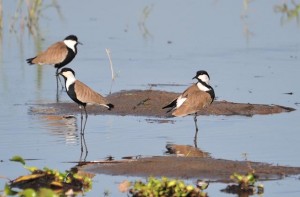
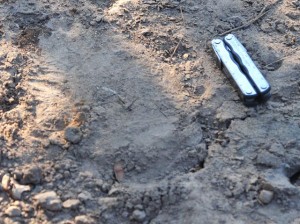
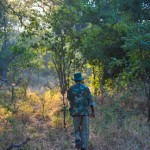
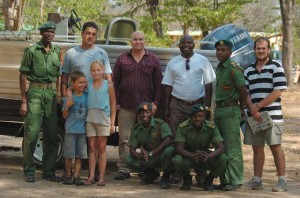
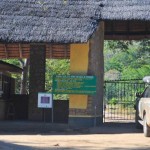
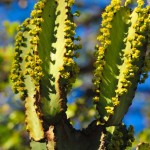
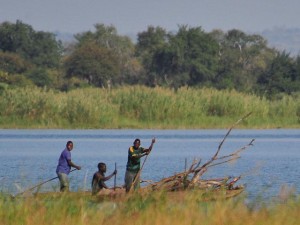

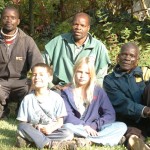
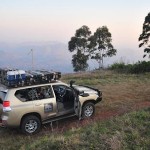

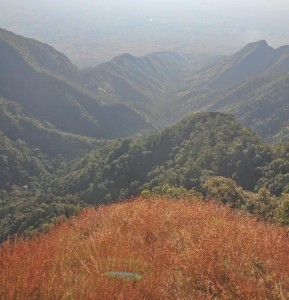


Howzit! Is the hole made by water, volcanic blow hole or wind erosion ? 60m down is far. Could you see the bottom?
Hi Colin, the hole was made as a result of volcanic activity. We could almost see the bottom, but there was plenty of vegetation and growth around the narrow hole. Unfortunately they have not kept the place as well as they could have.